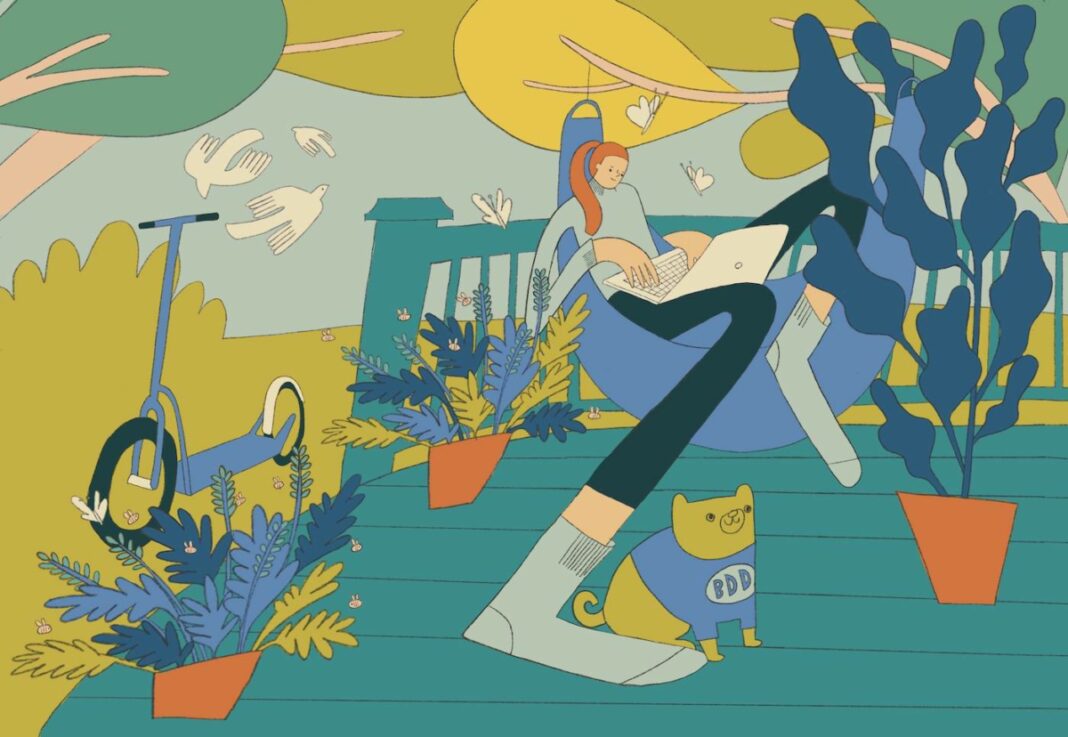Note that if you purchase something via one of our links, including Amazon, we may earn a small commission.
Dear Dot,
With Valentine's Day coming up, I have to wonder: Is there such a thing as sustainable floral delivery?
—Liza
Dearest Liza,
When my first child was born, a friend sent me an enormous bouquet of white lilies. Throughout the following days and nights of nursing, crying (mostly mine), exhaustion, and late-night soothing, those flowers never failed to make me marvel. Their simplicity. Their beauty. Their scent.
I have never forgotten the power those flowers had to lift my flagging spirits at a time when I felt inadequate to the task at hand. Mr. Dot favors living plants as gifts, which, sure. Okay. Plants have their place in my life and my home. But for occasions? Give me glorious, fabulous flowers. And the single biggest occasion for flowers is — you guessed it, Liza! — Valentine’s Day.
But can those glorious, fabulous flowers symbolizing boundless love extend that passion to Mother Earth?
The short answer is “not usually,” and it’s not just shipping that makes the cut flower industry a dirty one.
It starts where the flowers are grown. Colombia and Ecuador supply a large portion of the United States floral market, but it’s also common to find flowers from the Netherlands, South Africa, and even Australia. Flowers require enormous amounts of pesticides and fertilizers, which means that workers, even if they’re provided with protective gear, may face exposure to large amounts of toxic chemicals, often in countries where there’s little worker protection or oversight.
What’s more, flowers are thirsty — floriculture consumes 20 times more water than cotton, according to the Institute of Agriculture and Trade Policy. Greenhouse-grown flowers require the use of significantly more energy than flowers grown outdoors. Of course, these flowers must then travel quickly — they lose an estimated 15% of their value for each day of the journey — in refrigerated trucks, ships, and planes to markets hungry for them.
Peering through my rose-colored glasses, I see signs of improvement in the industry. The UK’s Coventry University’s Cut Flower Project notes some positive change, thanks in large part to certification programs that protect both workers and the environment.
Nonetheless, Consumption According to Dot rules apply:
- Buy local. The most local flowers of all, of course, come from your own garden. But, since mine is currently beneath about three inches of snow, I sought advice from Judy Laushman of the Association of Specialty Cut Flower Growers. She directed me to a site to help me find local growers, as well as to a page featuring growers who specifically reported they would have inventory for Valentine’s Day.
- Look for third-party verified eco-certifications, including FairTrade, Rainforest Alliance, and others. Ask your local florist or grocery store manager what certifications they look for when they’re purchasing flowers. If you decide to use an online service, Bloomsy Box offers a number of Rainforest Alliance Certified bouquets.
I haven’t overlooked, Liza, that you specifically asked about sustainable shipping. Again, buying local ensures that shipping is over shorter distances. But, there’s also something that Westerlay, a sustainably-minded orchid growing company in Santa Barbara, California calls “slow shipping,” which ensures that only trucks that are completely full make the trip to retailers. Of course, orchids, being potted and not cut, don’t have the same level of shipping urgency. It’s a lovely reminder that not all beautiful blooms come in a vase.
Dried flowers, while, alas, I know, are not the same as fresh, can also be a lovely choice. They’ve become increasingly trendy, weigh less, and can ship slow. With a little hunting, you may be able to find a local source; try a farmers market. You can also find dried flowers on Etsy, like the lovely dried organic bouquets from Nustad Family Farm in Monterey, California. An added bonus: Your gift will last much longer this way.
I hope, Liza, that whomever in your life holds your heart recognizes just how tender it is, and how lucky they are to receive a bouquet that brings with it the deepest intentions to protect the planet on which it was grown. I think I shall send a bouquet to my own tender-hearted first-born, now a beautiful 24-year-old, with whom I shared those first lily-infused days of her life.
Bloomingly,
Dot


